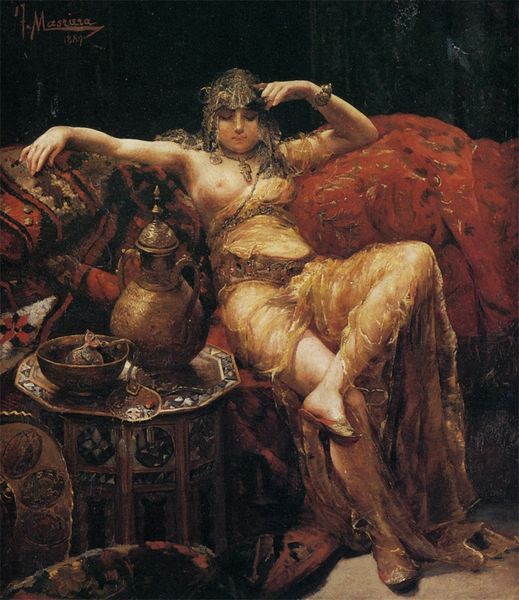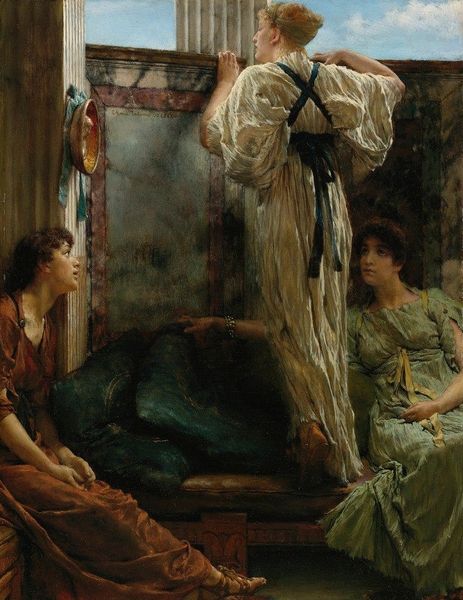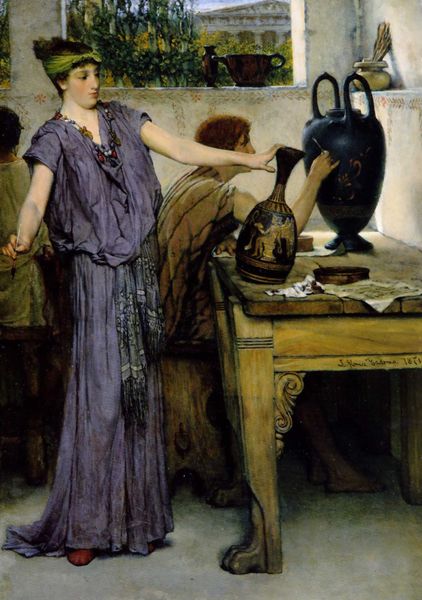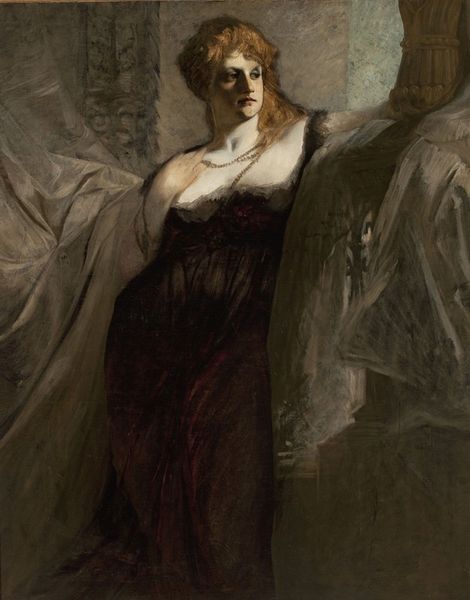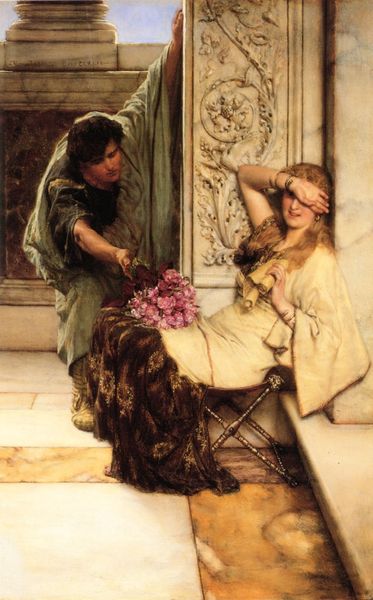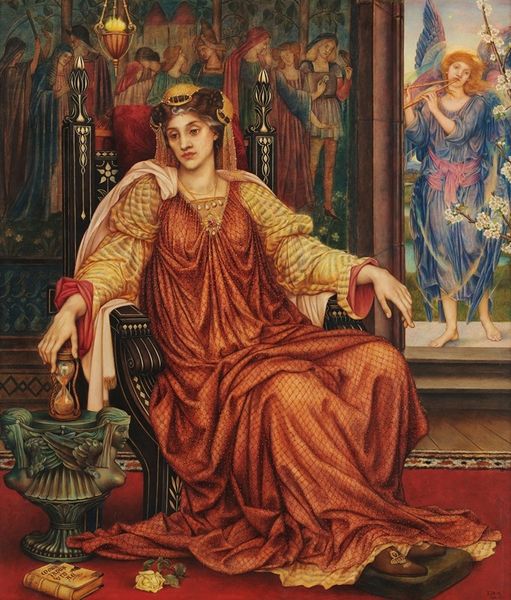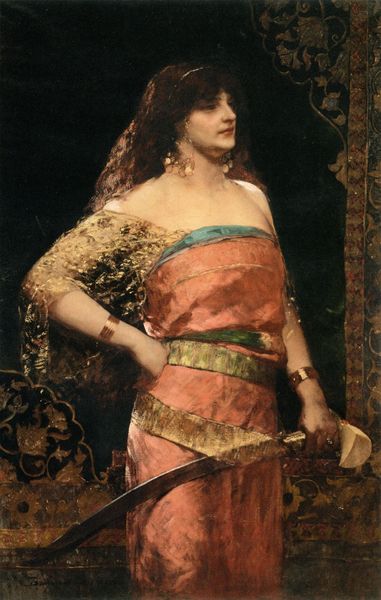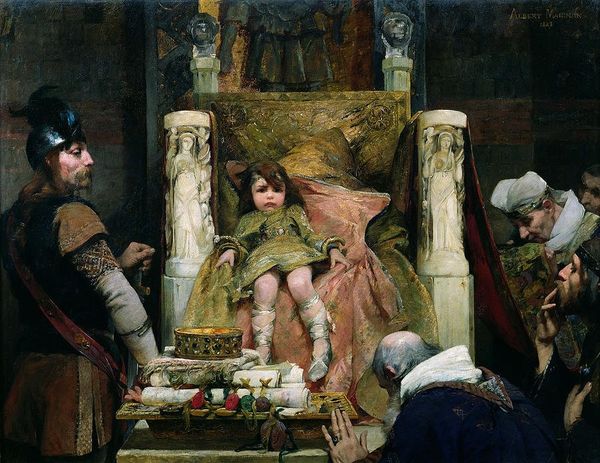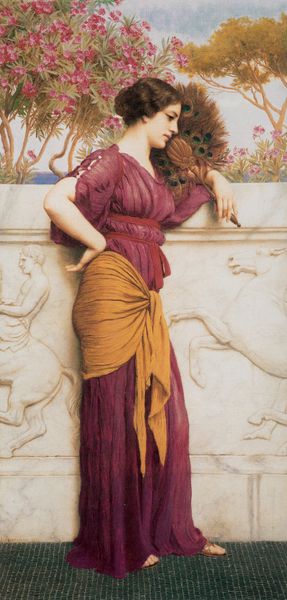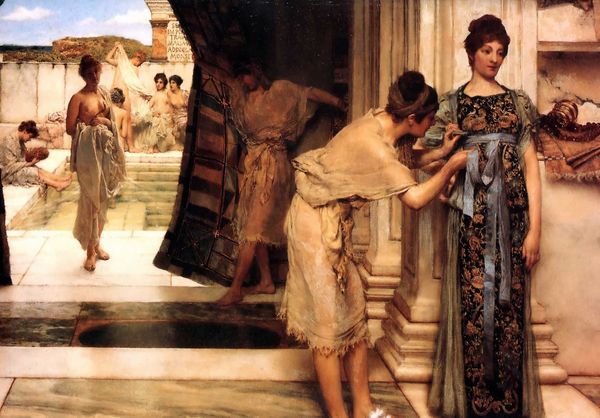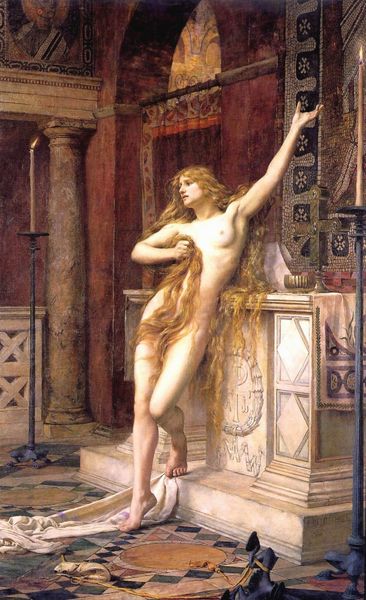
Copyright: Public domain
Editor: Lawrence Alma-Tadema’s "Not at Home Sir," painted in 1879 using oil paint. There's a really striking sense of drama here, like we’re peeking in on a private moment. What kind of stories do you think this painting is trying to tell? Curator: Consider the curtain itself: it's not merely a piece of fabric, but a veil, obscuring and revealing simultaneously. What is being hidden and what is being shown? Who holds the power to decide? Editor: That's interesting, because I was so focused on the narrative, I didn't consider the veil as having significance. It changes my perspective, a lot. Curator: Indeed. Think about Alma-Tadema's fascination with ancient Rome, yet he’s also portraying very contemporary, Victorian social dynamics. The peek-a-boo, the knowing glance of the woman to the right: these all suggest something unspoken, a game of social maneuvering. Where do you see echoes of historical Roman imagery combined with these modern subtleties? Editor: I see it now, in the marble textures and the women's drapery. I was reading it as just 'history-painting', but it's a mash-up! Is that fair to say? Curator: I think it’s incredibly fair. Tadema weaves multiple threads together seamlessly, and perhaps that is part of what made his works so compelling. The title itself "Not at Home Sir" hints at the image's underlying irony, a playful deception enacted within a space that should, presumably, be private. Editor: I never would have picked up on that complexity, but now that you point it out, I see so many layers! Curator: It is about seeing both what is depicted and what is suggested, the artist deliberately crafting visual codes for his viewers to decode. Editor: Definitely a new perspective for me on how art reflects social games. Thanks!
Comments
No comments
Be the first to comment and join the conversation on the ultimate creative platform.

